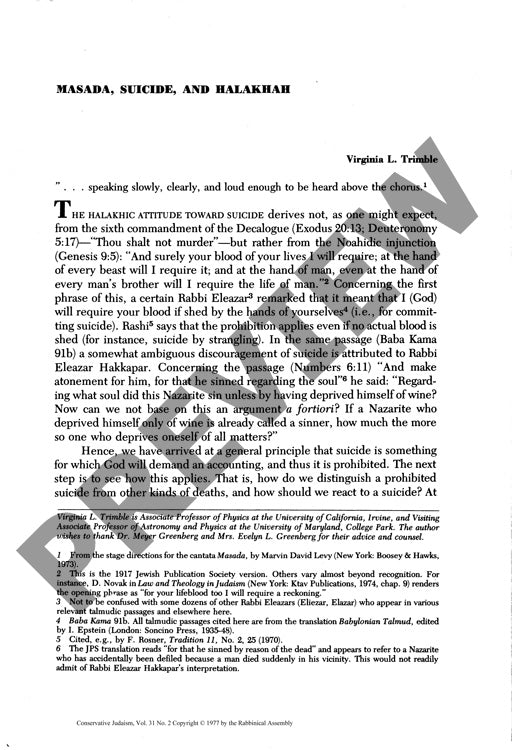Masada Suicide and Halakhah
Couldn't load pickup availability
The mass death of 960 Jewish defenders at Masada in 73 CE presents a complex challenge for Jewish law (halakhah): did their final acts constitute forbidden suicide, permissible martyrdom, or fall into an intermediate category? Through systematic analysis of Talmudic sources, rabbinical commentaries, and halakhic codes, three distinct legal categories emerge: forbidden willful self-destruction, required martyrdom under specific circumstances (idolatry, murder, or sexual immorality), and forgivable suicide under duress. The legal framework, rooted in Genesis 9:5 rather than the sixth commandment, developed through precedents like King Saul's death. Several possible justifications emerge for the Masada deaths, including avoidance of profanation of God's name (m'nyat hillul hashem) and an extended definition of martyrdom encompassing active rather than merely passive death. While most rabbinic authorities classify the Masada deaths as forgivable suicide under duress, paralleling King Saul's case, a legitimate halakhic argument exists for viewing them as permitted or even required martyrdom. This interpretation draws strength from the Sicarii's fundamental commitment to serving only God rather than human masters, and from the timing of the restrictive Lydda decision limiting mandatory martyrdom, which occurred sixty years after Masada's fall.

More Information
-
Physical Description
-
Publication Information
Published 1977
ISBN
-
Publication Credits
Virginia Trimble

